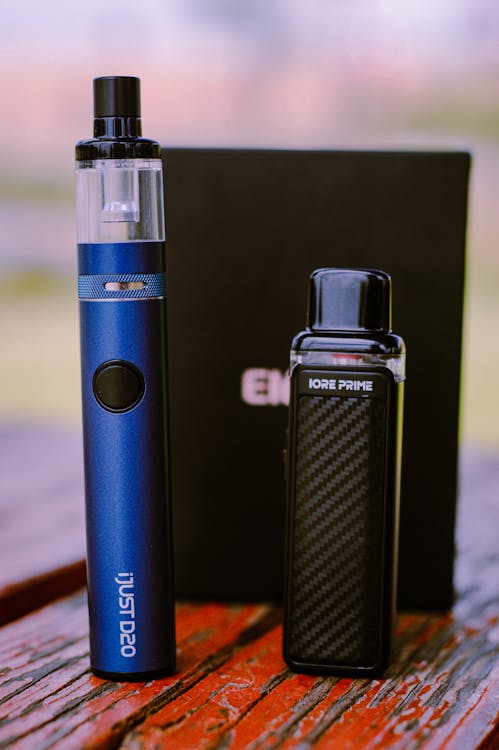Transitioning from nicotine to non-nicotine vapes can be a significant step towards improving your health and lifestyle. Many people start vaping as an alternative to smoking, but nicotine addiction can still pose health risks. By switching to non-nicotine vapes, you can enjoy the sensory and social aspects of vaping without the addictive substance. This article will guide you through the process, from understanding nicotine addiction to successfully making the switch, while addressing common challenges and providing helpful tips.
Understanding Nicotine Addiction

What is Nicotine?
Nicotine is a naturally occurring alkaloid found in tobacco plants. It is the primary component that causes addiction in cigarettes and many e-liquids used in vaping. When inhaled, nicotine rapidly enters the bloodstream and reaches the brain, where it stimulates the release of neurotransmitters like dopamine. This stimulation creates a pleasurable sensation, often described as a “rush,” which reinforces the desire to use nicotine repeatedly.
In addition to its addictive properties, nicotine can have other physiological effects. It can increase heart rate and blood pressure, which over time may contribute to cardiovascular problems. Nicotine also affects metabolism and can have various impacts on hormonal balance. Understanding these effects is crucial for appreciating the full scope of nicotine addiction.
The Nature of Nicotine Addiction
Nicotine addiction encompasses both psychological and physiological dependencies. Physiologically, the body becomes accustomed to the presence of nicotine, leading to withdrawal symptoms when intake is reduced. These symptoms can include irritability, anxiety, difficulty concentrating, and strong cravings. The body’s dependence on nicotine is driven by changes in brain chemistry, where nicotine receptors increase in number and sensitivity over time.
Psychologically, the act of vaping or smoking becomes a habitual response to certain triggers, such as stress, social situations, or daily routines. The ritualistic aspects of smoking or vaping—holding the device, the inhaling and exhaling process, and the associated sensory cues—become intertwined with nicotine use, making it more challenging to break the habit. Understanding these aspects of addiction is crucial for preparing to transition away from nicotine.
Benefits of Switching to Non-Nicotine Vapes

Health Benefits
Switching to non-nicotine vapes significantly reduces health risks associated with nicotine use. Nicotine can increase heart rate and blood pressure, contributing to cardiovascular problems. Eliminating nicotine intake can improve overall cardiovascular health and reduce the strain on your respiratory system, leading to better lung function and easier breathing.
Moreover, reducing nicotine consumption can lead to improvements in oral health. Nicotine can cause gum disease and tooth decay due to its impact on blood flow and saliva production. By eliminating nicotine, you may experience healthier gums and a lower risk of oral health issues. Additionally, without nicotine, your sense of taste and smell can improve, enhancing your overall sensory experience.
Psychological Benefits
Non-nicotine vapes can help reduce anxiety and stress levels. Nicotine, although initially relaxing, can exacerbate anxiety and create a cycle of dependence. Removing nicotine from your routine can lead to improved mental clarity and a more stable mood. This change can enhance your overall sense of well-being and make it easier to manage stress without relying on vaping.
In addition to reduced anxiety, quitting nicotine can lead to better sleep patterns. Nicotine is a stimulant, and its use can disrupt sleep by causing insomnia or poor-quality sleep. Without nicotine, you may find it easier to fall asleep and enjoy more restful nights, leading to increased energy and better mood throughout the day.
Financial Benefits
Non-nicotine vaping products are often less expensive than their nicotine-containing counterparts. Over time, the cost savings can be substantial. Without the need for nicotine, you may find yourself using your vape less frequently, further reducing expenses. These financial benefits add up, making the transition not only healthier but also more economical.
Social and Lifestyle Benefits
Switching to non-nicotine vapes can also improve your social interactions. Nicotine dependency often dictates social behavior, and eliminating it can provide more freedom in social settings. You’ll no longer need to excuse yourself for vaping breaks, and you can engage more fully in activities without the distraction of nicotine cravings.
Preparing for the Transition

Setting Realistic Goals
Setting achievable goals is essential for a successful transition. Start by identifying your reasons for making the switch and establish both short-term and long-term objectives. Short-term goals might include reducing nicotine levels gradually, while long-term goals could involve completely eliminating nicotine from your vape routine. Clear, measurable goals will keep you motivated and focused throughout the process.
To further enhance your goal-setting, consider keeping a journal to track your progress. Document your nicotine levels, your experiences, and any challenges you encounter. Reflecting on this journal can provide insights into your triggers and help you adjust your strategies as needed. Visualizing your progress, such as through charts or milestones, can also reinforce your commitment and provide a sense of accomplishment as you move forward.
Educating Yourself
Knowledge is power when it comes to making a transition. Research non-nicotine vape options, including different flavors and product types. Understanding what’s available can help you find enjoyable alternatives to your current nicotine vape. Familiarize yourself with the ingredients in non-nicotine e-liquids to ensure you’re making informed choices that align with your health goals.
In addition to researching products, educate yourself on the process of nicotine detoxification. Understanding the physical and psychological changes your body will undergo can prepare you for the challenges ahead. This knowledge can also help you identify the best strategies for managing withdrawal symptoms and maintaining your commitment to quitting nicotine.
Building a Support System
Support from others can make the transition smoother. Connect with support groups and online forums where you can share experiences and tips. Involving friends and family in your journey can provide additional encouragement and accountability. Having a solid support system helps you stay motivated and committed to your goals.
Consider seeking professional support as well. A healthcare provider or a counselor specializing in addiction can offer personalized advice and strategies. They can help you create a tailored plan for quitting nicotine and provide ongoing support to address any challenges you face during the transition.
The Transition Process

Gradual Reduction Strategy
One effective method to transition is gradually reducing nicotine levels in your e-liquids. Start with a high-nicotine content and slowly decrease the amount over several weeks or months. This gradual reduction can help minimize withdrawal symptoms and cravings, making the transition more manageable. Use e-liquids with progressively lower nicotine concentrations until you reach a nicotine-free option.
As you reduce nicotine levels, pay attention to your body’s responses. Track your cravings, mood changes, and any physical symptoms. Adjust your reduction schedule if needed to ensure the process remains comfortable and sustainable. Combining gradual reduction with behavioral changes, such as avoiding known triggers or developing new coping mechanisms, can enhance your success.
Immediate Switch Strategy
Some prefer to make an immediate switch to non-nicotine vapes, often referred to as going “cold turkey.” This method can be challenging due to the abrupt change but can be effective for those who want to quickly eliminate nicotine from their system. Coping mechanisms such as mindfulness, breathing exercises, and staying occupied can help manage the initial difficulties of this approach.
In preparation for an immediate switch, remove all nicotine-containing products from your environment. Surround yourself with non-nicotine vape options and other tools to manage cravings, such as gum or flavored water. Inform your support system of your plan so they can provide extra encouragement and help you stay accountable during the initial phase.
Utilizing Replacement Therapies
Nicotine replacement therapies (NRTs) like patches, gums, and lozenges can support the transition by providing a controlled dose of nicotine to alleviate withdrawal symptoms. These therapies can be used in conjunction with non-nicotine vapes to gradually wean off nicotine. Compare the benefits of NRTs with non-nicotine vapes to determine the best combination for your needs.
NRTs can be particularly helpful if you experience severe withdrawal symptoms or if previous attempts to quit have been challenging. Consult with a healthcare provider to determine the appropriate type and dosage of NRT for your situation. Combining NRT with behavioral support and non-nicotine vaping can provide a comprehensive approach to quitting nicotine.
Overcoming Challenges

Dealing with Withdrawal Symptoms
Withdrawal symptoms are a common challenge during the transition. Symptoms may include irritability, anxiety, and difficulty concentrating. To manage these, stay hydrated, eat a balanced diet, and engage in regular physical activity. These healthy habits can help reduce the intensity of withdrawal symptoms and improve your overall well-being.
Consider incorporating relaxation techniques into your routine to combat withdrawal-related stress. Practices such as yoga, meditation, or deep breathing exercises can help calm your mind and body. Keeping a structured daily routine can also provide stability and reduce the likelihood of giving in to cravings during moments of stress or boredom.
Handling Cravings
Cravings can be intense but manageable with the right strategies. Distract yourself with activities you enjoy, such as hobbies or socializing. Mindfulness practices and deep breathing exercises can also help reduce the urge to vape. Keeping your hands and mouth busy with alternatives like chewing gum or drinking water can further assist in managing cravings.
In addition to distractions, consider using cognitive-behavioral techniques to address cravings. Challenge any irrational thoughts that may arise, such as believing that you cannot cope without nicotine. Replace these thoughts with positive affirmations and remind yourself of the benefits of quitting nicotine.
Staying Motivated
Maintaining motivation is key to a successful transition. Track your progress and celebrate milestones, no matter how small. Rewarding yourself for achieving goals can reinforce your commitment. Reflect on the benefits you’ve experienced since reducing nicotine and use these positive changes as motivation to continue.
Regularly remind yourself of the reasons you decided to quit nicotine. Create a list of these reasons and keep it in a visible place as a constant reminder of your goals. Sharing your progress with your support system can also provide additional encouragement and accountability.
Conclusion: Transition from Nicotine to Non-Nicotine Vapes
Transitioning from nicotine to non-nicotine vapes is a worthwhile endeavor that can improve your health, well-being, and financial situation. By understanding nicotine addiction, setting realistic goals, and preparing effectively, you can make the switch successfully. Whether you choose a gradual reduction or an immediate switch, being equipped with strategies to overcome challenges will enhance your journey. Remember to leverage support systems and celebrate your progress along the way. The transition is a step towards a healthier lifestyle, and with determination and the right tools, you can achieve it.
Reflecting on your progress and the benefits you’ve experienced can reinforce your commitment to staying nicotine-free. Over time, you’ll notice improvements in your physical health, mental clarity, and financial situation. These positive changes can serve as powerful motivators to maintain your nicotine-free lifestyle.
Finally, consider sharing your journey with others who may be contemplating a similar transition. Your experiences and insights can provide valuable guidance and inspiration. By supporting others, you also reinforce your own commitment to staying nicotine-free. Embrace the journey as a path to a healthier, more fulfilling life.

